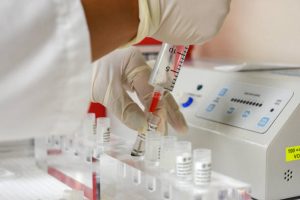Stem Cell Therapy for Peripheral Neuropathy

For patients with peripheral neuropathy, mesenchymal stem cell therapy can help treat their condition. This therapy involves a single injection of stem cells in the area of pain. Because the stem cells are immediately active, they begin to work on the peripheral neuropathy stem cell. Peripheral neuropathy affects the nerves of the extremities, as well as the nerve roots. Peripheral neuropathy can cause serious damage to peripheral nerves, interrupting vital motor and sensory transmissions.
Baseline data for transplantation of peripheral neuropathy stem cells
Baseline data on transplantation of peripheral neuropathy stem cells show that the transplantation of these cells has improved the quality of life and decreased the symptoms of the condition. The median EDSS score improved from 1.4 to 4.5 at two and four years, and the MSFC scores improved from -0.01 to 0.64. The relapse-free and progression-free survival rates were also high, and the study’s total quality-of-life scores improved from 46 to 49 at two and four years, respectively.
Of the 25 subjects who were enroll in this trial, 24 underwent HDIT/HCT. Among the 66 subjects, 61 were alive and 80% experienced a clinical relapse-free survival. The hematologic and radiologic response was usually achieved within one year, with four patients experiencing delayed responses. Although maximal improvements in neuropathic symptoms occurred only after three years, subjective improvements were seen as early as three months after transplantation.
Although the survival rate of patients receiving this therapy is similar between patients with ARF and those without, those with ARF were more likely to survive. Patients in the ‘no-ARF’ group had a higher 90-day survival rate. One-year survival rates of patients without ARF were 94%, and the results were positive for peripheral neuropathy, which is one of the major causes of morbidity associate with this condition.
Mechanisms of action of mesenchymal stem cells
Mesenchymal peripheral neuropathy stem cells are one of the most promising therapeutic approaches for nerve regeneration. They have a broad spectrum of properties that allow them to support injured tissues and improve their structure and function after injury. The main mechanisms of action of mesenchymal stem cells are not fully understood, but many have hypothesize that they can modulate neuroinflammation and promote angiogenesis, as well as sustain axonal regeneration.
MSCs can also be beneficial for diabetic patients because of their anti-inflammatory properties. Because inflammation is an integral part of the nervous system, the ability of MSCs to reduce it is essential for the treatment of neuropathic pain. As MSCs have migratory potential, they can also modulate the immune system to reduce inflammation. And this is not to be underestimate.
To improve the quality of life for people with mesenchymal peripheral neuropathy, research should examine the mechanisms that trigger the growth of these cells. They will also study their effects in vivo. The study will involve the participation of patients with mesenchymal peripheral neuropathy. It will also involve studies of stem cells in degenerative diseases, such as diabetes and Parkinson’s disease.

Side effects of mesenchymal stem cell therapy for peripheral neuropathy
Mesenchymal stem cells, or adult stem cells, are a promising treatment option for peripheral neuropathy. The potential for the therapy lies in the fact that adult stem cells can be deploye. To treat the condition without causing side effects. The procedure can be used to improve the symptoms of peripheral. Neuropathy, such as pain, swelling, and loss of motor function. But side effects are still an issue.
One study investigated whether mesenchymal stem cells can reduce chronic pain in a model of dorsal root ganglion injury. They found that BMSCs inhibited the expression of pERK1/2 in the DRG and reversed the increased p38-MAPK protein levels. The treatment also reduced the expression of inflammatory factors. In a subsequent study. Teng et al. reported that mesenchymal stem cell therapy for peripheral neuropathy significantly reduced pain symptoms and decreased the frequency of episodes of severe pain.
However, side effects of mesenchymal stem cell treatment for peripheral neuropathy are still a concern. Researchers have also discover that nerve electrophysiological detection could be affect in diabetic patients. The nerve conduction test can measure this. This procedure is associate with a significant reduction in side effects. Despite the potential risks, mesenchymal stem cell therapy for peripheral neuropathy is safe and has many benefits.




